QUALITY CONTROL
A series of presentations addressed Quality Control, including one by Richard Lepine, general manager with Argos Solutions. He touched on automatic grading and surface defect inspection technology, initially showing its obvious benefits (speed, defect size and location, no labor issues, verification, etc.) compared to visual inspection.
He defined new standards for TFL surface defects (such as dirt, spots, fibers, scratches, and area size) and revealed Argo’s automated detection system for printed pattern TFL, including detection of hidden defects in complicated patterns, automatic adjustment for inaccuracies in paper, stretch/shrink, rotation; special illumination; and no learning mode required; and noted the Argos use of different light angles; and finally addressed Argos’ real time monitoring and database system and reporting for categorization and statistical analysis.
Keith Mays, president of EWS North America, addressed a range of quality control products from Electronic Wood Systems GmbH, Baumer Inspection Gmbh and Monitor Plus GmbH. He hit on spark detection/extinguishment and board scanning and measurement from EWS, and the SicoScan system in collaboration with Siempelkamp, and within SicoScan the EcoScan NEO – FBD (foreign body detector) and FLY area weight measurement.
He provided detail on Baumer’s ColourBrain 4.0 optical top and bottom inspection of raw board, including a new illumination module, running through a Q-Live server environment that provides database, networking and is user-friendly. He addressed Q-Brain, which classifies the defects while QLive provides full transparency to leverage process optimization.
He also spoke in detail on Monitor Plus, a system that monitors product quality and actives alarm signals or a production stop if quality specifications are not met. It features SMART camera technology and is designed for any kind of conveying system and entails the latest data processing for its numerous product scanning and detection tasks and functions ranging from bowing to cupping, twisting, curvature, to number of drill holes in wood components, particleboard edge porosity, laminate color and glossiness, profile and contour measurement, through multiple line laser thickness measurement.
Continuing with the theme of board scanning and quality control, Michael Spurgin, sales manager North America for Limab, spoke about the different building materials that Limab’s scanning and measurement system caters to. He said Limab’s thickness measurement eliminates the effects from vibrations and bumps.
He noted several benefits with in-line measurement, from consistency to reduced downtime and increased yield; and the benefits of non-contact versus contact roller systems, including measurement on soft material like insulation to thin board to high speed and rough surfaces, while measurement starts immediately at the front edge of panels.
He pointed to multiple locations for Limab installation in a typical board processing line, including after the press, either before or after the sander (verifying that the final product is within tolerances), and with double effectiveness if measurement scanners are located both before and after the sander while using one PC; as well as a three point sander configuration including between the heads.
Jason Kovacik, sales manager with Finna Sensors, spoke on production enhancements and profitability by using IoT data-driven moisture control measurement sensors. He reviewed why IoT sensors are trending, including real-time process data, visibility of process trends and conditions, and more focused analysis. Compared to non-enabled sensors, IoT sensors enable cloud-based updates, remote diagnostics, and monitoring of sensor health and performance.
Kovacik spoke on the criteria for integrating IoT-enabled sensors into your process, including partnering with the right organization and having a strategy for adoption. More technology-specific, he focused on Finna’s OMNIR noncontact, non-destructive, real-time moisture control measurement, which features white light, near-infrared energy filtering and resonance frequency of water molecules, and with advantages built into the associated and minimized system hardware.
Kovacik talked about the company’s RF technology including an in-line meter that delivers a full moisture map of boards/pieces; and he addressed their in-line acoustic technology for strength grading.
Finna’s products can be implemented and provide value throughout the process, from incoming raw material to drying, energy production and final product quality.

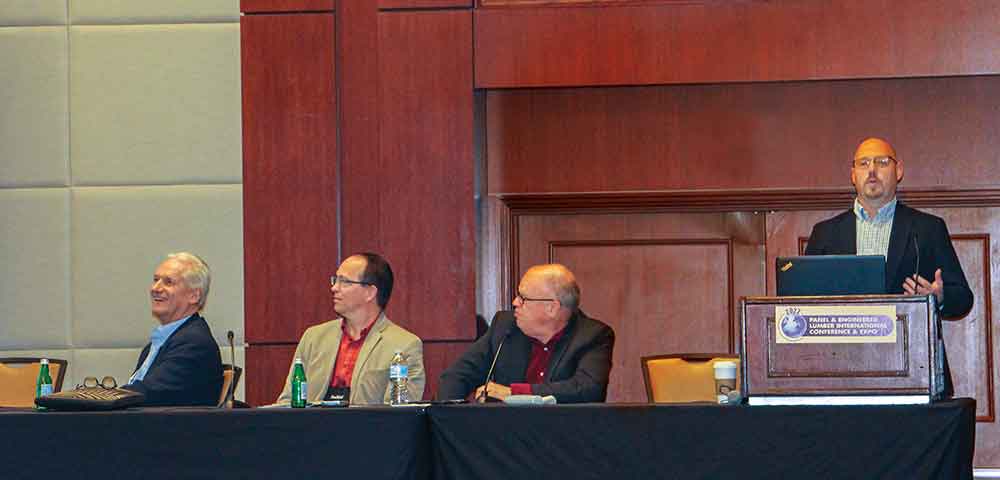
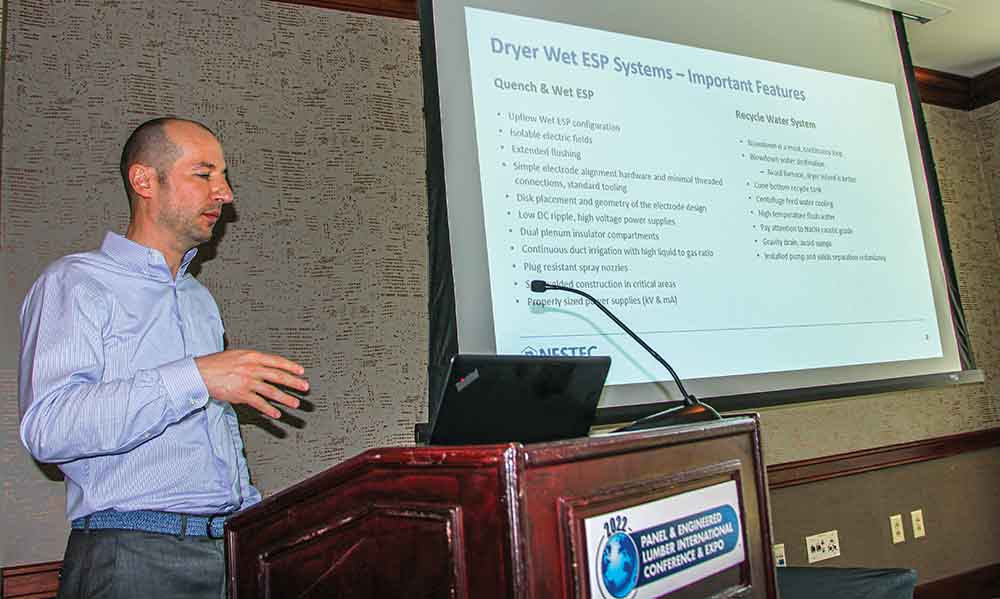
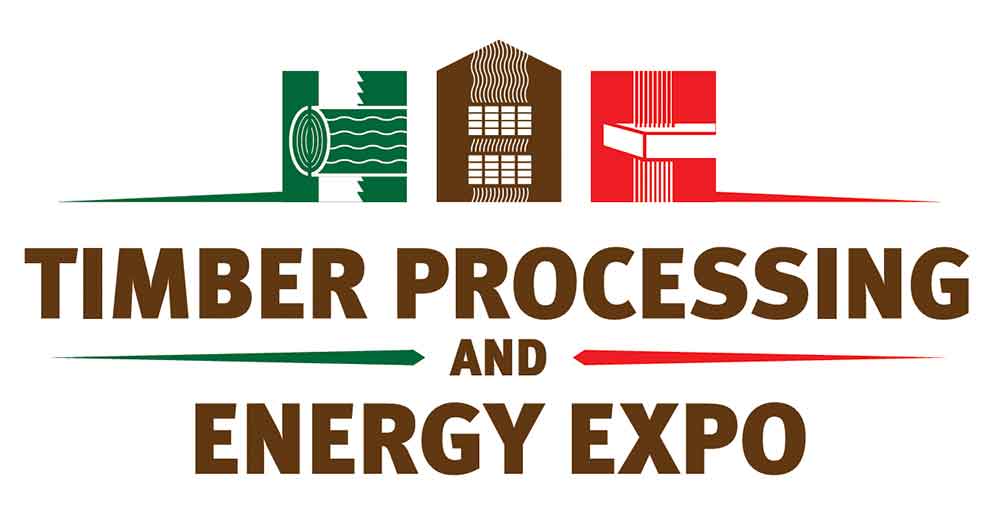

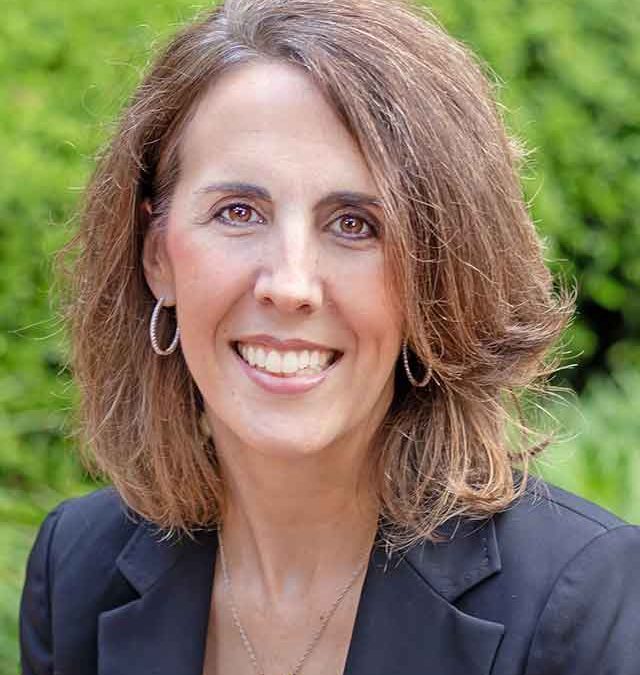
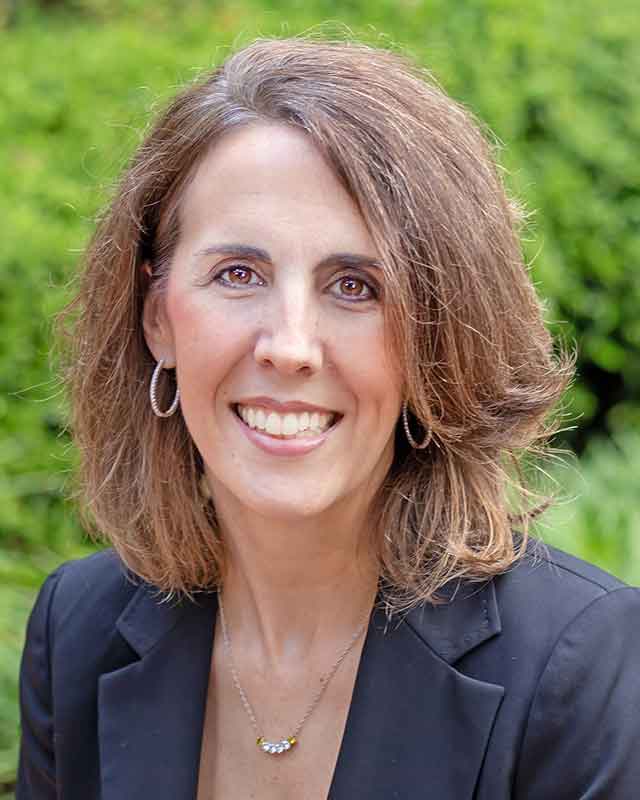 RoyOMartin has named Natalie Martin Monroe Vice President of Environmental, Safety, and Sustainability Operations. She will also serve as a member of the Strategic Action Leadership Team (SALT) and the Corporate Secretary for the Martin Sustainable Resources (MSR) Board of Directors.
RoyOMartin has named Natalie Martin Monroe Vice President of Environmental, Safety, and Sustainability Operations. She will also serve as a member of the Strategic Action Leadership Team (SALT) and the Corporate Secretary for the Martin Sustainable Resources (MSR) Board of Directors.